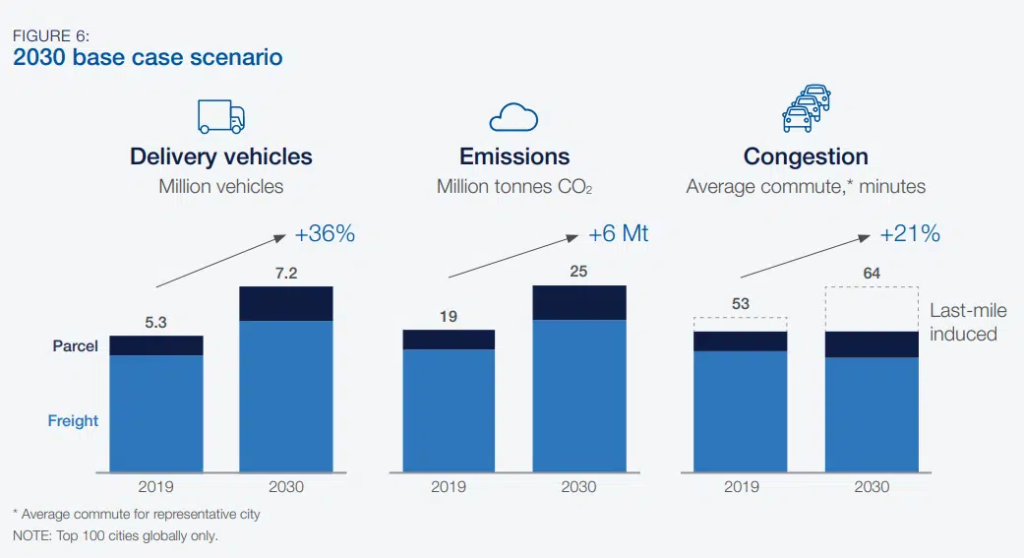The main purpose of this ongoing blog will be to track planetary extreme, or record temperatures related to climate change. Any reports I see of ETs will be listed below the main topic of the day. I’ll refer to extreme or record temperatures as ETs (not extraterrestrials).😉
Main Topic: Why Online Shopping Hurts the Environment
Dear Diary. We are now only a week away from Christmas, so most of us who are giving gifts have used online shopping. Items received in the mail were wrapped by manufacturers, shipped to a central location, unwrapped when ordered, then rewrapped to be shipped out to customers. These customers then use fancy wrapping paper and bows before putting items below Christmas trees to be unwrapped by delighted kids and adults alike for the holiday. If we don’t like our gifts, there is the added impact of using energy to send items back to central online shopping locations, with more wrapping material necessary for this step.
Prior to about 2010 most items were bought in stores, so the intermediate step of unwrapping items from a manufacturer at a warehouse (such as that of Amazon), then having items shipped out to customers in new packing material was not much of an environmental issue. I’m just as guilty as many for relying on the convenience of having items shipped directly to my home. How much is this convenience costing our environment? That question is partially answered in this Earth.org article, which I am using for our main topic of the day:
The Environmental Impact of Online Shopping | Earth.Org
The Truth About Online Shopping and Its Environmental Impact
CRISIS – POLLUTION CRISES BY MARTINA IGINIGLOBAL COMMONS DEC 15TH 2022 7 MINS

Global e-commerce has grown steadily over the past decade. The COVID-19 pandemic has pushed the sector even more, triggering changes in consumer behaviour and leading to staggering records in sales. Big companies such as Amazon, Alibaba, and Walmart have monopolised online shopping and increased consumers’ expectations. Nowadays, they expect goods to be delivered on the same day and to return them without cost. Digitalisation and technological innovations have indeed allowed the industry to do what was believed to be impossible just a few decades ago. However, this revolution comes with high costs for our planet. We take a look at the growing trends in online shopping and its environmental impact.
Modern Consumerism
We are living in times when consumerism is at its finest. The digitalisation of modern life as well as new, innovative technologies have completely transformed the way in which people shop. In the past decade, the number of digital buyers has climbed at an unprecedented pace, turning e-commerce into a multibillion-dollar industry. Furthermore, since the outbreak of the COVID-19 pandemic, digital channels, which were already growing at a steady pace, have become by far the most popular shopping alternative for consumers around the world, sparking an extraordinary increase in online purchases. In June 2020, global retail e-commerce traffic reached a record 22 billion monthly visits and a staggering USD$26.7 trillion in sales.
By the end of this year, Asia is set to account for 50% of the world’s total online retail sales, most of which take place in China, currently the world’s leading country by retail e-commerce sales. Singles’ Day, Black Friday, and Cyber Monday are just a few examples of the initiatives that push consumers to buy more and more goods. During these shopping “events”, retailers that have monopolised the global economy such as Amazon, Walmart and Alibaba, as well as smaller companies that are trying to keep up with this trend to stay afloat within the industry, deliberately and accurately orchestrate sales by pressuring people to purchase products under the spell of discounts and limited time. Even though this year these three events, which all take place in November, recorded enormous online sales worldwide and in China, where Singles’ Day – or ‘Double 11’ – has seen a record 540.3 billion yuan (UDS$84.4 billion) in sales, online traffic has dropped from 2020. Experts describe this drop as a consequence of a change in the consumers’ behaviour, as they have started buying their Christmas gifts much earlier in the season for fears about the supply chain.
Indeed, over the past two years, major shipping companies have had a hard time keeping up with the demand and they have been struggling to deliver packages all over the world. The global supply chain is at a breaking point and, unless consumers change their shopping attitude and their expectations when buying online, the crisis is likely to reach a point of no return. And as much as big corporations are easily blamed for this crisis, consumers are equally responsible.
There are three key differentiators that consumers seek when buying online: price, speed, and convenience. Amazon, the world’s leading online marketplace in terms of traffic, has found the perfect formula to satisfy all three of them, by training its customers into believing that free and fast shipping is something they should have, thus forcing smaller retailers to adopt the same strategy in order to keep up with giant competitors. While buying online was initially a way to find the best deals, with innovation and technology, e-commerce has turned into a fast machine conceived to satisfy more and more consumers’ demands and expectations. In September 2021, several industry groups representing over 65 million transport workers wrote an open letter to heads of state at the United Nations General Assembly, warning that, if this trend continues to grow at the same rate, global transport systems are going to collapse.
You might also like: 7 Fast Fashion Companies Responsible for Environmental Pollution
The Issue of Over-Packaging
The online shopping addiction of modern consumers is not only leading the global supply chain to a point of no return, but it is also having a huge environmental impact with huge catastrophic consequences on our planet. Indeed, with the boom in online shopping came, not surprisingly, huge environmental issues. The effects can be seen worldwide. However, there is one country where the industry’s repercussions on the environment are particularly visible: China. The country’s e-commerce success is unmatched worldwide, with experts predicting that 52,1% of the country’s retail sales will come from online shopping in 2021. The success is mainly attributed to China’s rapid evolution of the internet and the digitalisation of payment systems. However, as the country’s e-commerce is able to generate hundreds of billions of dollars in revenue from a single shopping day like Double 11, environmental groups warn consumers that this shopping extravaganza comes at a dramatic cost to the planet.
Products’ packaging contributes in large part to CO2 emissions from producing plastics, polluting ecosystems as well as adding enormous amounts of waste to our landfills. 3 billion trees are pulped yearly to produce 241 million tons of shipping cartons, the forest conservation group Canopy found. And of the 86 million tons of plastic packaging produced globally each year, not even 14% is recycled. As for China, statistics from the State Post Bureau showed that the country’s courier handled 83 billion express parcels in 2020 alone, which accounted for 1.8 million tonnes of plastic waste and nearly 10 million tonnes of paper waste. In Hong Kong alone, 780 million pieces of packaging waste from online shopping was generated over the course of 2020, according to a recent study by the local group Green Sense. The study also showed that, on average, 2.18 pieces of packaging were used for each product in the same year, mostly consisting of mixed materials, which are hard to recycle. As space for landfills become scarcer, China is struggling to keep up with the growing e-commerce waste mountain. Companies such as Alibaba are thus developing more sustainable packaging, trying to reverse the trend while the Chinese government is taking steps to regulate packaging standards.
The Impact of Shipping Goods
Shipping emission is another online shopping environmental impact to consider. The transport of goods across the world is responsible for a huge portion of CO2 emissions generated by e-commerce. In 2020, the shipping and return of products accounted for 37% of the total GHG emissions. The major problem can be attributed, once again, to the consumers’ appetite for convenience. It is estimated that by 2030, the number of delivery vehicles will increase by 36%, reaching approximately 7.2 million vehicles. This will not only result in an increase of about 6 million tonnes of CO2 emissions, but it will also increase commutes by 21%, as vehicles will take longer to travel due to higher traffic congestion.

Online shopping and its environmental impact including carbon emissions. Source: World Economic Forum.
The real problem, however, lies in fast shipping. As new technologies improve the transport of goods and make it as fast as it had ever been before, more and more consumers request same-day and instant deliveries, two options that have been growing 36% and 17% annually, respectively. These two options, as the World Economic Forum reported, are particularly popular in China, making up more than 10% of the total amount of parcels being delivered each day, which are on average nearly 3 million. A study from MIT found that traditional shopping has two times the carbon footprint if compared to online shopping. This discourse, however, is valid only if one does not take the rushed online shopping into account. Indeed, when consumers opt for a fast delivery, the emissions far exceed those generated from in-person shopping. A major reason for this is that delivery companies cannot afford to wait for all products to arrive before shipping them out. When dealing with a one- or two-day shipping window, they are often forced to send out trucks that are filled at half their capacity, generating more traffic and thus emissions.
But shipping is not the only issue. As more and more online retailers, big and small, offer the option to send back goods easily and often for free, return rates, especially of fashion items, have skyrocketed, exceeding 30% of all purchased goods. A study on consumers’ behaviour showed that 79% of consumers want free return shipping and 92% of them are likely to buy again if the items they purchase are easy to return. It is statistics like these that incentivise companies to offer such options, as they will eventually be lucrative for them.
There is little doubt that the e-commerce revolution has brought enormous advantages. However, online shopping and its environment impact must not be ignored. Nowadays, most consumers choose convenience over principles. And, as much as companies trying to become more and more sustainable is a good step in the right direction, these changes alone will not entirely solve the problem. Consumers are the ones that have the last word, and it is their behaviour and their decisions that eventually determine the impact of this industry. Thus, the only way to reverse the dangerous trend that e-commerce has taken, there needs to be a mind shift from both the producer’s as well as the consumer’s side.
Featured image by: Chris Watt
You might also like: How E-Commerce Companies are Making Online Shopping More Sustainable
About the Author

Martina Igini
Martina is the Managing Editor of Earth.Org. She has two BA degrees, in Translation/Interpreting Studies and Journalism, and a MA in International Development from the University of Vienna. Her interests include sustainability and the role of public policy in environmental protection with a focus on developing countries. After working at the United Nations Global Communication Department in Vienna, she joined a newspaper in Italy as a reporter before moving to Hong Kong in 2020.
You Might Also Like:

13 Biggest Environmental Problems Of 2022
SEP 3RD 2022 15 MINS

CLIMATE CHANGEGUIDESPOLICY & ECONOMICSSOLUTIONS
4 Key Takeaways From David Attenborough’s ‘A Life on Our Planet’
OCT 8TH 2020 5 MINS

15 Largest Wildfires in US History
SEP 15TH 2022 6 MINS
Here are some “ET’s” recorded from around the planet the last couple of days, their consequences, and some extreme temperature outlooks:
Here is some more global November 2022 climatology:
Here is more climate and weather news from Saturday:
(As usual, this will be a fluid post in which more information gets added during the day as it crosses my radar, crediting all who have put it on-line. Items will be archived on this site for posterity. In most instances click on the pictures of each tweet to see each article. The most noteworthy items will be listed first.)
If you like these posts and my work please contribute via the PayPal widget, which has recently been added to this site. Thanks in advance for any support.)
Guy Walton… “The Climate Guy”